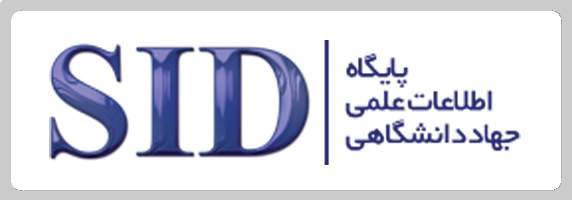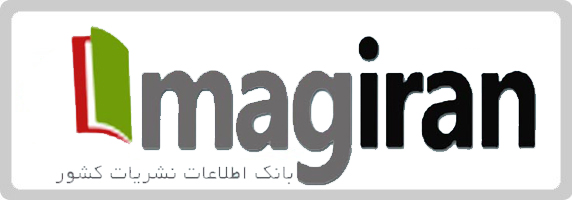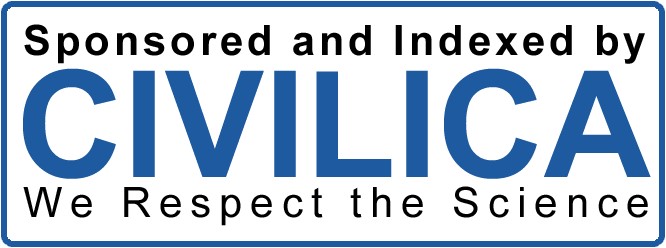The Relationship Between Possible Selves Balance and Lifelong Learning With the Mediating Role of Mindfulness in Middle-Aged Adults
Keywords:
Possible selves balance, mindfulness, lifelong learning, middle ageAbstract
This study aimed to examine the relationship between possible selves balance and lifelong learning, considering the mediating role of mindfulness among middle-aged employees in Eslamshahr, Tehran. A descriptive-correlational design using structural equation modeling was employed. The statistical population included all middle-aged employees in Eslamshahr, from which 527 individuals were randomly selected. Data were collected using the Possible Selves Balance Questionnaire (Zadsheer et al., 2019), the Five Facet Mindfulness Questionnaire (Baer et al., 2006), and the Lifelong Learning Scale (Kirby et al., 2010). Reliability and validity were confirmed through confirmatory factor analysis and Cronbach’s alpha. Data were analyzed using AMOS software and structural equation modeling Results revealed that possible selves balance had a positive and significant effect on mindfulness (β=0.54, t=9.898, p<0.001) and lifelong learning (β=0.30, t=5.918, p<0.001). Mindfulness also showed a positive and significant effect on lifelong learning (β=0.48, t=9.003, p<0.001). Indirect effects analysis indicated that mindfulness played a positive and significant mediating role in the relationship between possible selves balance and lifelong learning (β=0.26, t=6.66, p<0.01). The proposed model explained 47% of the variance in lifelong learning and 29% of the variance in mindfulness, with all model fit indices falling within acceptable ranges (GFI=0.93, CFI=0.94, RMSEA=0.059). The findings suggest that possible selves balance can enhance lifelong learning in middle-aged adults through the promotion of mindfulness. These results underscore the importance of designing educational programs aimed at strengthening possible selves balance and mindfulness to foster lifelong learning abilities during midlife.
Downloads
References
Abou-Maali Hosseini, K., Keyvan, L., & Sa'adati Shamireh, A. (2012). Prediction of social problem-solving skills based on birth order and attachment styles. Educational Research Journal, 8(33). https://journals.iau.ir/article_517951.html
Ahmadvand, Z., Heydari Nasab, L., & Shayeeri, M. (2012). Elucidation of psychological well-being based on mindfulness components. Health Psychology, 1(2), 60-69. https://hpj.journals.pnu.ac.ir/article_340_647fc3939778f84b25174480902e4652.pdf
Baer, R. A., Smith, G. T., Hopkins, J., Krietemeyer, J., & Toney, L. (2006). Using self-report assessment methods to explore facets of mindfulness. Assessment, 13(1), 27-45. https://doi.org/10.1177/1073191105283504
Bialik, M., & Fadel, C. (2015). Skills for the 21st century: What should students learn? Massachusetts: Center for Curriculum Design. https://www.tandfonline.com/doi/abs/10.1080/00313831.2014.904423
Boeren, E. (2023). Conceptualizing lifelong learning participation: theoretical perspectives and integrated approaches. wbv Publikation. https://www.ssoar.info/ssoar/handle/document/102201
Chiorri, C., Soraci, P., & Ferrari, A. (2023). The role of mindfulness, mind Wandering, Attentional Control, and maladaptive personality traits in problematic Gaming Behavior. Mindfulness, 14(3), 648-670. https://doi.org/10.1007/s12671-022-02066-4
Collins, J. (2009). Lifelong learning in the 21st century and beyond. RadioGraphics, 29(2), 613-622. https://doi.org/10.1148/rg.292085179
De Fruyt, F., Wille, B., & John, O. (2015). Employability in the 21st century: Complex (Interactive) problem solving and other essential skills. Industrial and Organizational Psychology, 8, 276-281. https://doi.org/10.1017/iop.2015.33
Dede, C. (2010). Comparing frameworks for 21st century skills In - J. Bellance & R. Brandt (Eds.), 21st Century Skills: Rethinking How Students Learn. Solution Tree Press. https://sttechnology.pbworks.com/f/Dede_(2010)_Comparing%20Frameworks%20for%2021st%20Century%20Skills.pdf
Duyff, R. L. (1999). The value of lifelong learning: Key element in professional career development. Journal of the American Dietetic Association, 99(5), 538-543. https://doi.org/10.1016/S0002-8223(99)00135-2
Forster, K., & Shaw, C. (2022). Mindfulness for enhancing learning in Engineering Education In - Towards a new future in engineering education, new scenarios that european alliances of tech universities open up. Universitat Politècnica de Catalunya. https://doi.org/10.5821/conference-9788412322262.1265
Gao, X., & Xu, H. (2014). The dilemma of being English language teachers: interpreting teachers' motivation to teach and professional commitment in China's hinterland regions. Language Teaching Research, 18, 152-168. https://doi.org/10.1177/1362168813505938
Giyahi, F., Mohammadzadeh, A., & Kian Arzi, F. (2020). Psychometric characteristics of the Lifelong Learning Scale among students at Semnan University. Research in School and Virtual Learning, 7(1), 69-78. https://sid.ir/paper/262908/fa
Kirby, J. R., Knapper, C., Lamon, P., & Egnatoff, W. J. (2010). Development of a scale to measure lifelong learning. International Journal of Lifelong Education, 29(3), 291-302. https://doi.org/10.1080/02601371003700584
Knowles, M. S. (1975). Self-directed learning: A guide for learners and teachers. New York: Association Press. https://journals.sagepub.com/doi/abs/10.1177/0001848191041003001
Kuzior, A., Krawczyk, D., Onopriienko, K., Petrushenko, Y., Onopriienko, I., & Onopriienko, V. (2023). Lifelong Learning as a Factor in the Country's Competitiveness and Innovative Potential within the Framework of Sustainable Development. Sustainability, 15(13), 9968. https://doi.org/10.3390/su15139968
Le, A. H., Choy, S., Smith, R., & Billett, S. (2023). Learning across working life: A case from Australia In - Sustaining employability through work-life learning: Practices and policies. Singapore: Springer Nature Singapore. https://doi.org/10.1007/978-981-99-3959-6_13
Loeng, S. (2020). Self‐directed learning: A core concept in adult education. Education Research International, 2020(1), 3816132. https://doi.org/10.1155/2020/3816132
Morris, T. H. (2024). Four dimensions of self-directed learning: a fundamental meta-competence in a changing world. Adult Education Quarterly, 74(3), 236-254. https://doi.org/10.1177/07417136231217453
Mousavi, R., & Abou-Maali Hosseini, B. F. (2023). The effectiveness of growth-oriented education for adults aged 35 to 45 in enhancing self-cohesion and lifelong learning. Applied Family Therapy, 4(5), 205-192. https://doi.org/10.61838/kman.aftj.4.5.11
Neuser, N. J. (2010). Examining the factors of mindfulness: A confirmatory factor analysis of the five facet mindfulness questionnaire. https://core.ac.uk/download/pdf/48847395.pdf
Pouy, S., Peikani, F. A., Nourmohammadi, H., Sanei, P., Tarjoman, A., & Borji, M. (2018). Investigating the effect of mindfulness-based training on psychological status and quality of life in patients with breast cancer. Asian Pacific journal of cancer prevention: APJCP, 19(7), 1993. https://pmc.ncbi.nlm.nih.gov/articles/PMC6165667/
Sogor, A. (2021). Lifelong learning: the 21st century skill to guide maritime training and development. https://doi.org/10.21677/imla2021.02
Soland, J., Hamilton, L. S., & Stecher, B. M. (2013). Measuring 21st century competencies: Guidance for educators. New York, NY: Asia Society. https://oei.org.ar/ibertic/evaluacion/sites/default/files/biblioteca/11_measurement_of_21stcenturyskills.pdf
Wasson, R. S., Barratt, C., & O'Brien, W. H. (2020). Effects of mindfulness-based interventions on self-compassion in health care professionals: a meta-analysis. Mindfulness, 11(8), 1914-1934. https://doi.org/10.1007/s12671-020-01342-5
Wong, S. Y. S., Chan, S. K. C., Yip, B. H. K., Wang, W., Lo, H. H. M., Zhang, D., & Bögels, S. M. (2023). The effects of mindfulness for youth (MYmind) versus group cognitive behavioral therapy in improving attention and reducing behavioral problems among children with attention-deficit hyperactivity disorder and their parents: A randomized controlled trial. Psychotherapy and psychosomatics, 92(6), 379-390. https://doi.org/10.1159/000534962
Yüksel, A., Çetinkaya, F., & Karakoyun, A. (2021). The effect of mindfulness‐based therapy on psychiatric symptoms, psychological well‐being, and pain beliefs in patients with lumbar disk herniation. Perspectives in psychiatric care, 57(1), 335-342. https://doi.org/10.1111/ppc.12568
Zadshir, F., Sosan, S., & Abou-Maali Hosseini, K. (2020). Construction and psychometric analysis of the Possible Selves Balance Questionnaire among students. Applied Psychology, 14(4), 414-391. https://www.noormags.ir/view/en/articlepage/1747593/
Zhao, F. F. (2022). The association of loneliness, mindfulness, and optimism with self-directed learning among nursing students in China: A cross-sectional study. Journal of Professional Nursing, 38, 65-73. https://doi.org/10.1016/j.profnurs.2021.11.009
Zhao, H., Zhang, Z., & Heng, S. (2024). Grit and college students' learning engagement: Serial mediating effects of mastery goal orientation and cognitive flexibility. Current Psychology, 43(8), 7437-7450. https://doi.org/10.1007/s12144-023-04904-7
Zhao, X. (2024). Exploring the Role of Mindfulness Meditation in Facilitating English Learning and Optimizing Classroom Teaching. Journal of Psychology and Behavior Studies, 4(1), 81-87. https://doi.org/10.32996/jpbs.2024.1.9
Downloads
Published
Submitted
Revised
Accepted
Issue
Section
License
Copyright (c) 2025 سعید فلاح تفتی (نویسنده); عبدالوحید داودی (نویسنده مسئول); رامین تبرائی (نویسنده)

This work is licensed under a Creative Commons Attribution-NonCommercial 4.0 International License.





